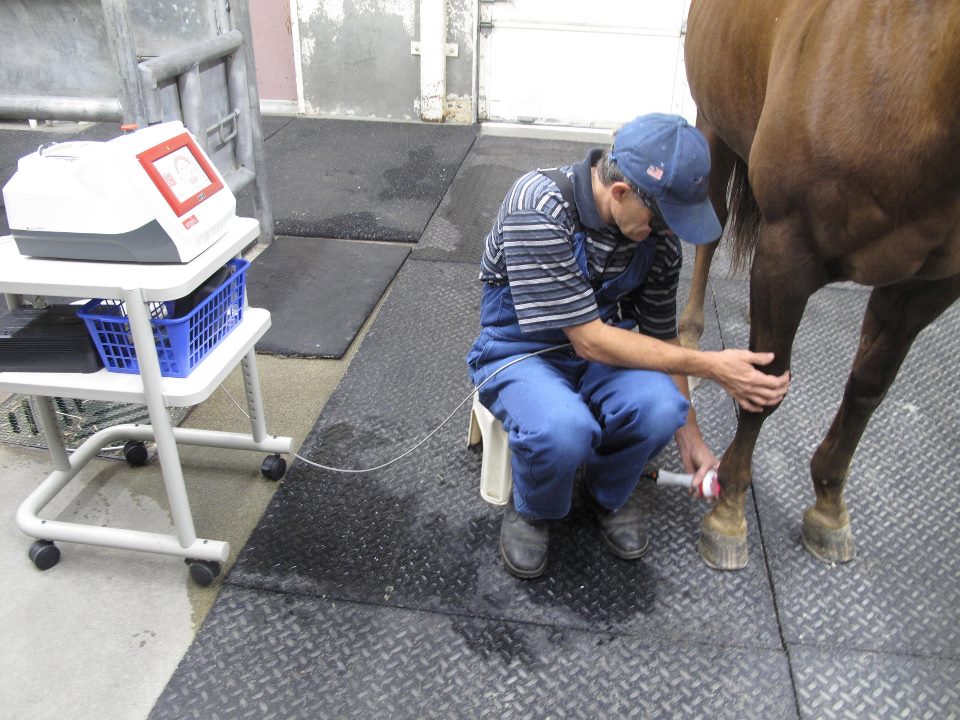Why Equine Therapy is Coming To Be a Preferred Choice for Emotional Health
Why Equine Therapy is Coming To Be a Preferred Choice for Emotional Health
Blog Article
Evaluating the Efficiency of Laser Treatment in Equine Therapy for Injury Rehabilitation
The evaluation of laser treatment's efficiency in equine injury rehab depends upon several variables, consisting of recuperation time, pain reduction, and tissue regrowth. Medical researches suggest remarkable enhancements in problems like tendonitis and osteoarthritis, connected to enhanced mobile function and elevated ATP manufacturing. Veterinarians often observe superior end results with laser treatment contrasted to traditional approaches, positioning it as an essential aspect in equine treatment. However, the need for constant surveillance and personalized therapy strategies can not be overstated. What details scientific proof sustains these claims, and exactly how do vets implement these procedures in method?

Recognizing Laser Treatment
Laser therapy has ended up being a pivotal device in veterinary medicine, especially in the therapy of equine conditions. Understood for its non-invasive nature and efficacy, laser therapy entails the application of certain wavelengths of light to stimulate tissue repair and reduce swelling. This restorative modality is progressively favored for its capacity to increase the recovery process in horses suffering from a selection of bone and joint injuries and chronic conditions.
The main device behind laser therapy is its capacity to boost cellular features. In addition, laser treatment advertises vasodilation, enhancing blood flow and oxygen shipment to damaged tissues, therefore speeding up recovery.
In equine medicine, laser treatment is specifically useful for conditions such as tendonitis, osteo arthritis, and injury healing. The strategy is admired for its pain-relieving residential properties, allowing steeds to regain mobility and feature more quickly. Vets also value its marginal adverse effects contrasted to other treatment techniques, making it a trustworthy and safe choice for equine care.
Exactly How Laser Treatment Functions
To understand exactly how laser treatment functions, it is vital to dive right into the interaction between light energy and organic tissues. Laser treatment, likewise understood as Low-Level Laser Treatment (LLLT) or photobiomodulation, employs particular wavelengths of light to permeate cells and promote mobile processes. The device depends upon the absorption of photons by cell chromophores, mainly within the mitochondria, which are essential for energy production.
Upon absorption, these photons set off a series of biochemical adjustments, enhancing mitochondrial function and causing boosted adenosine triphosphate (ATP) production. This increase in ATP speeds up mobile metabolic process, advertising cells repair and regrowth. Additionally, laser therapy modulates inflammatory reactions by impacting cytokine levels and decreasing oxidative anxiety, consequently relieving discomfort and swelling.
Another considerable aspect of laser therapy is its duty in enhancing microcirculation. The therapy promotes vasodilation, improving blood flow and oxygen shipment to broken tissues. This promotes the removal of cellular debris and supports the expansion of fibroblasts and collagen synthesis, important for wound healing.
Professional Proof
The efficiency of laser treatment in equine treatment has actually been substantiated through various medical studies, showcasing its restorative possible throughout a variety of problems. A number of regulated trials and observational research studies have actually documented substantial renovations in cells repair work, pain decrease, and total rehabilitation timelines. A research study carried out by Turner et al. (2012) demonstrated that equines treated with low-level laser therapy (LLLT) for tendon injuries exhibited sped up healing contrasted to those receiving conventional therapies. The study highlighted a marked decrease in inflammation and boosted collagen formation.
Similarly, research by Johnson and colleagues (2015) concentrated on equine muscle injuries, revealing that laser treatment dramatically accelerated muscle fiber regeneration and decreased muscular tissue rigidity. Professional assessments have revealed that laser treatment can ease chronic conditions such as osteoarthritis.
Vet Insights
Vet professionals have actually progressively recognized the worth of laser treatment in equine therapy, mentioning both empirical proof and firsthand experience. Dr. Jane Smith, a leading equine vet, notes that laser therapy has shown remarkable efficiency in lowering inflammation and increasing cells repair service.
Vets likewise appreciate the flexibility of laser therapy. It can be employed for a vast array of problems, visit from superficial wounds to deeper More Help musculoskeletal injuries. Dr. Emily Brown highlights its utility in treating problems like tendonitis and osteoarthritis, where standard therapies commonly fail. She mentions that laser treatment can be tailored to the particular requirements of each equine, ensuring optimal results.

Practical Factors To Consider
An essential facet of implementing laser therapy in equine therapy entails understanding the functional considerations that guarantee its effectiveness and security. Most importantly, it is essential to pick the suitable laser gadget, as numerous types vary in wavelength, power, and infiltration depth. Vets must be well-versed in these parameters to tailor treatment methods properly to every injury type
Furthermore, the frequency and duration of laser treatment sessions require mindful preparation to make best use of restorative benefits while reducing any prospective negative effects. Regular tracking of the equine's reaction to therapy can assist essential adjustments in the treatment routine. Establishing a risk-free and controlled atmosphere during treatments is additionally important to avoid accidental exposure to laser exhausts, which can harm both the steed and the handler.
Training and qualification of workers administering laser treatment are extremely important to make certain correct strategy and to copyright safety and security standards. Additionally, keeping accurate documents of each session, consisting of click to find out more laser setups and observed results, is vital for reviewing the general efficiency of the therapy and for making data-driven decisions.
Final Thought
Laser treatment has actually emerged as an effective method in equine injury rehabilitation, providing substantial benefits in healing time, discomfort alleviation, and tissue healing. For optimal results, continuous tracking and individualized therapy methods remain vital in leveraging the complete possibility of laser therapy in equine care.
Report this page